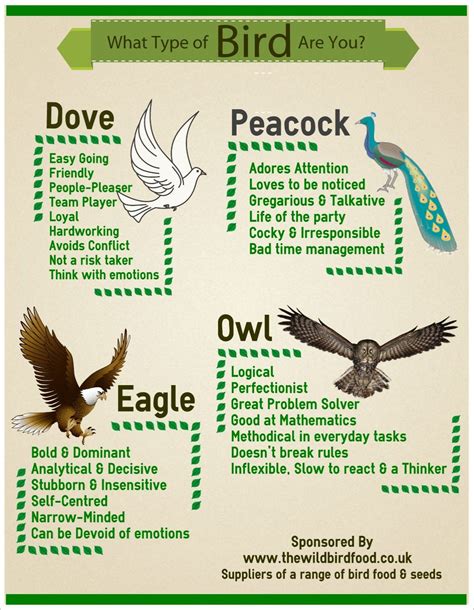Introduction
Birds are captivating creatures that have fascinated humans for centuries. With their diverse range of colors, sizes, and behaviors, different bird breeds offer unique companionships and experiences to bird enthusiasts. Understanding the characteristics and traits of various bird breeds is crucial for making informed choices and providing optimal care. This comprehensive guide explores the multifaceted world of bird breeds, comparing their key characteristics and traits to help you navigate the decision-making process with ease.

Primary Characteristics to Consider
1. Size and Weight
The size and weight of a bird can significantly impact its handling, housing, and nutritional requirements. Breeds such as the Hyacinth Macaw, one of the largest parrots, can weigh up to 4.4 pounds, while the tiny Sun Conure weighs a mere 4 ounces. Considering the available space and resources before selecting a bird breed is essential.
2. Lifespan
The lifespan of a bird is a crucial factor to consider, as it determines the long-term commitment involved. While smaller birds like Budgies typically live for 5-8 years, larger species such as African Grey Parrots can live up to 60 years. Understanding the potential lifespan of a bird helps in planning for its care and well-being throughout its life.
3. Temperament and Behavior
The temperament and behavior of a bird breed play a significant role in its suitability as a companion. Some species, like Cockatiels, are known for their friendly and affectionate nature, while others, such as Eclectus Parrots, can be more independent and territorial. Researching the behavioral traits of different breeds is essential to find a bird that aligns with your personality and lifestyle.
4. Vocalization
The vocalization of birds varies widely among breeds. Budgies, for instance, are renowned for their cheerful chirping, whereas Macaws possess powerful and distinctive calls. Understanding the vocalization patterns of different breeds is crucial for those seeking a quiet or talkative companion.
Secondary Characteristics to Consider
1. Diet and Nutrition
Different bird breeds have specific dietary needs that must be met to maintain their health and well-being. Some species, like Parakeets, primarily consume seeds and pellets, while others, like Lorikeets, require specialized nectar-based diets. Familiarizing yourself with the nutritional requirements of different breeds is essential for providing a balanced and appropriate diet.
2. Intelligence and Trainability
The intelligence and trainability of bird breeds vary considerably. African Grey Parrots are renowned for their remarkable intelligence and problem-solving abilities, while Budgies are known for their playful and trainable nature. Understanding the cognitive and learning capabilities of different breeds helps in providing appropriate enrichment and training programs.
3. Exercise and Play
Birds require regular exercise and play to maintain their physical and mental well-being. Some species, like Cockatiels, enjoy exploring and foraging in larger cages, while others, like Macaws, need ample space to fly and interact with their toys. Providing suitable exercise opportunities is essential for keeping birds healthy and happy.
4. Socialization and Companionship
Birds are social creatures that thrive on companionship and interaction. Some species, like Budgies and Canaries, prefer to live in flocks, while others, like Eclectus Parrots, prefer solitary living. Understanding the social needs of different breeds is important for providing an enriching and fulfilling environment.
Breed Comparison Table
To facilitate the comparison of bird breeds, we have compiled a table highlighting the key characteristics and traits of some popular species:
| Breed | Size | Lifespan | Temperament | Vocalization | Diet |
|---|---|---|---|---|---|
| Budgie | Small (7-8 inches) | 5-8 years | Friendly and playful | Chirping and warbling | Seeds, pellets, fruits, vegetables |
| Cockatiel | Medium (12-13 inches) | 15-20 years | Affectionate and sociable | Whistling, chattering | Seeds, pellets, fruits, vegetables, nuts |
| African Grey Parrot | Large (12-13 inches) | 40-60 years | Intelligent and curious | Mimicking, talking | Pellets, seeds, nuts, fruits, vegetables |
| Macaw | Large (30-40 inches) | 50-60 years | Striking and playful | Loud calls, screams | Fruits, nuts, seeds, pellets |
| Eclectus Parrot | Medium (18-20 inches) | 25-30 years | Quiet and independent | Soft calls, whistles | Fruits, vegetables, pellets, seeds |
Choosing the Right Bird Breed
Selecting the right bird breed is a personal decision that depends on your specific preferences, lifestyle, and environment. Here are some key factors to consider:
-
Space and Resources: Consider the size of your home and the amount of space you can dedicate to your bird’s cage or aviary.
-
Time and Attention: Birds require regular attention and care, including feeding, cleaning, and socialization. Ensure you have sufficient time and dedication to meet their needs.
-
Personality and Compatibility: Research different breeds and interact with them if possible to find one that matches your personality and lifestyle.
-
Health and Veterinary Care: Understand the potential health issues associated with specific breeds and ensure you have access to avian veterinarians for regular checkups and treatments.
Conclusion
Understanding the characteristics and traits of different bird breeds is essential for making informed choices and providing optimal care. By considering the primary and secondary characteristics discussed in this guide, you can navigate the decision-making process with confidence. Remember, each bird is unique, and spending time getting to know different breeds will help you find the perfect companion for your home.





















